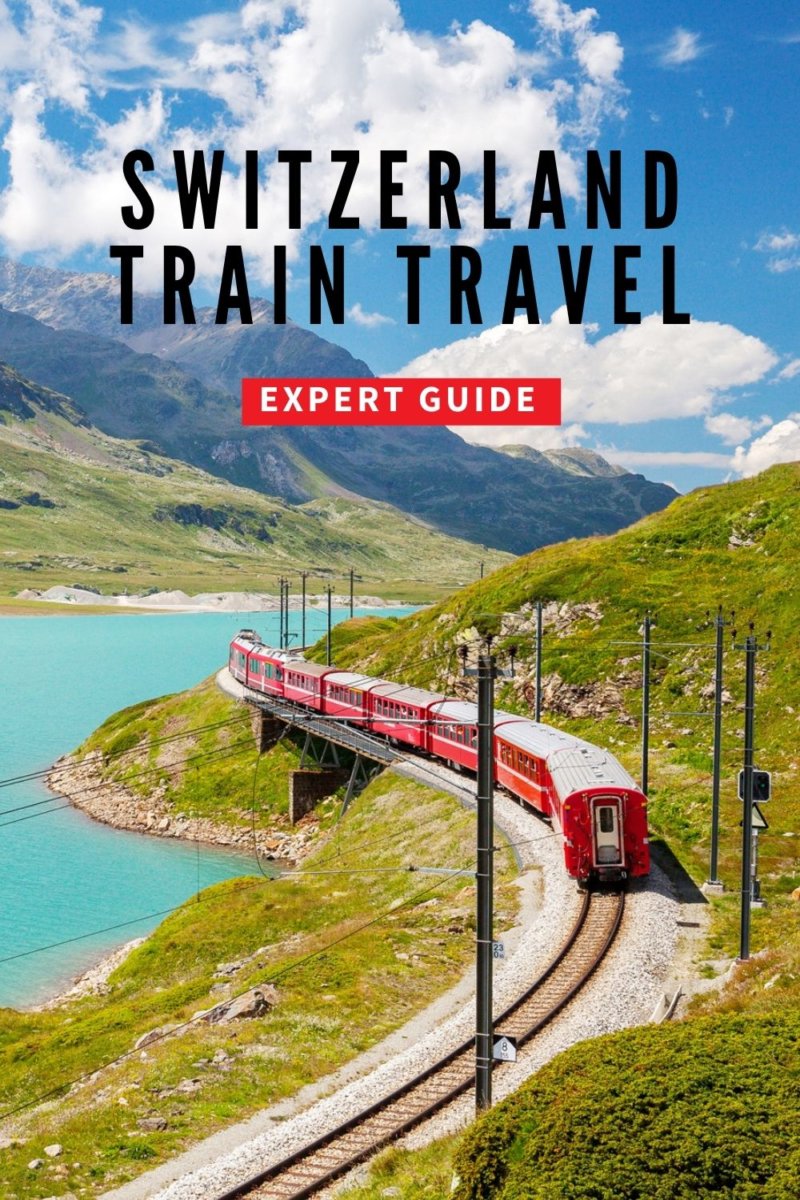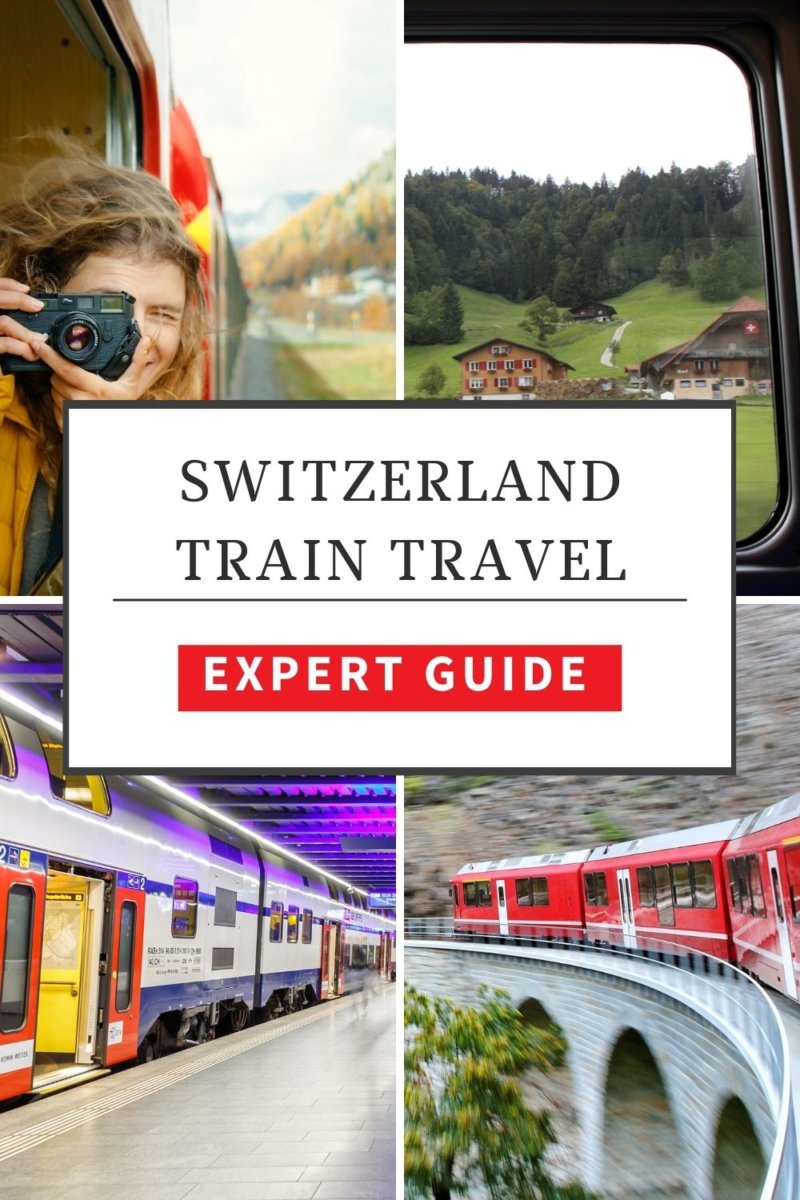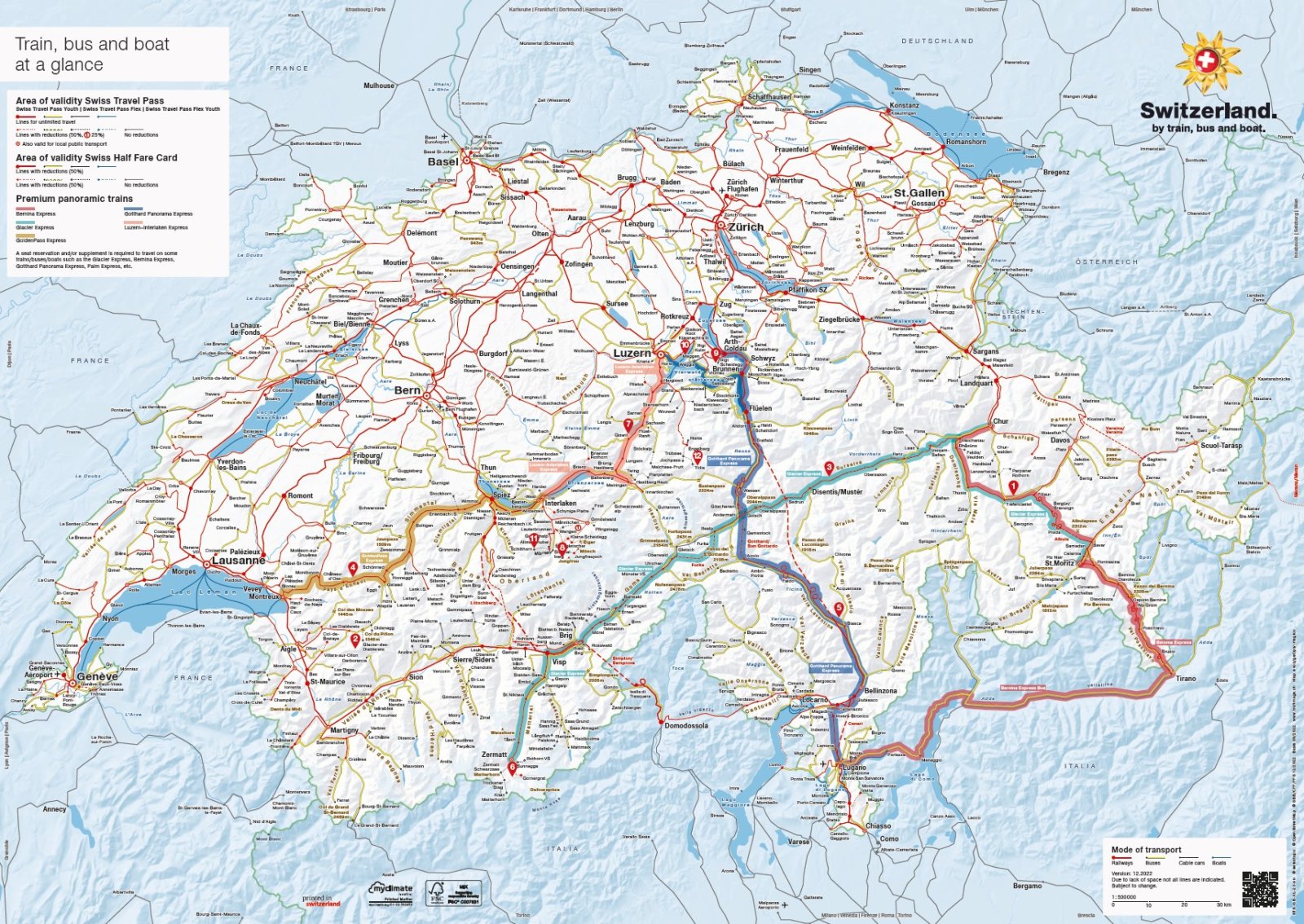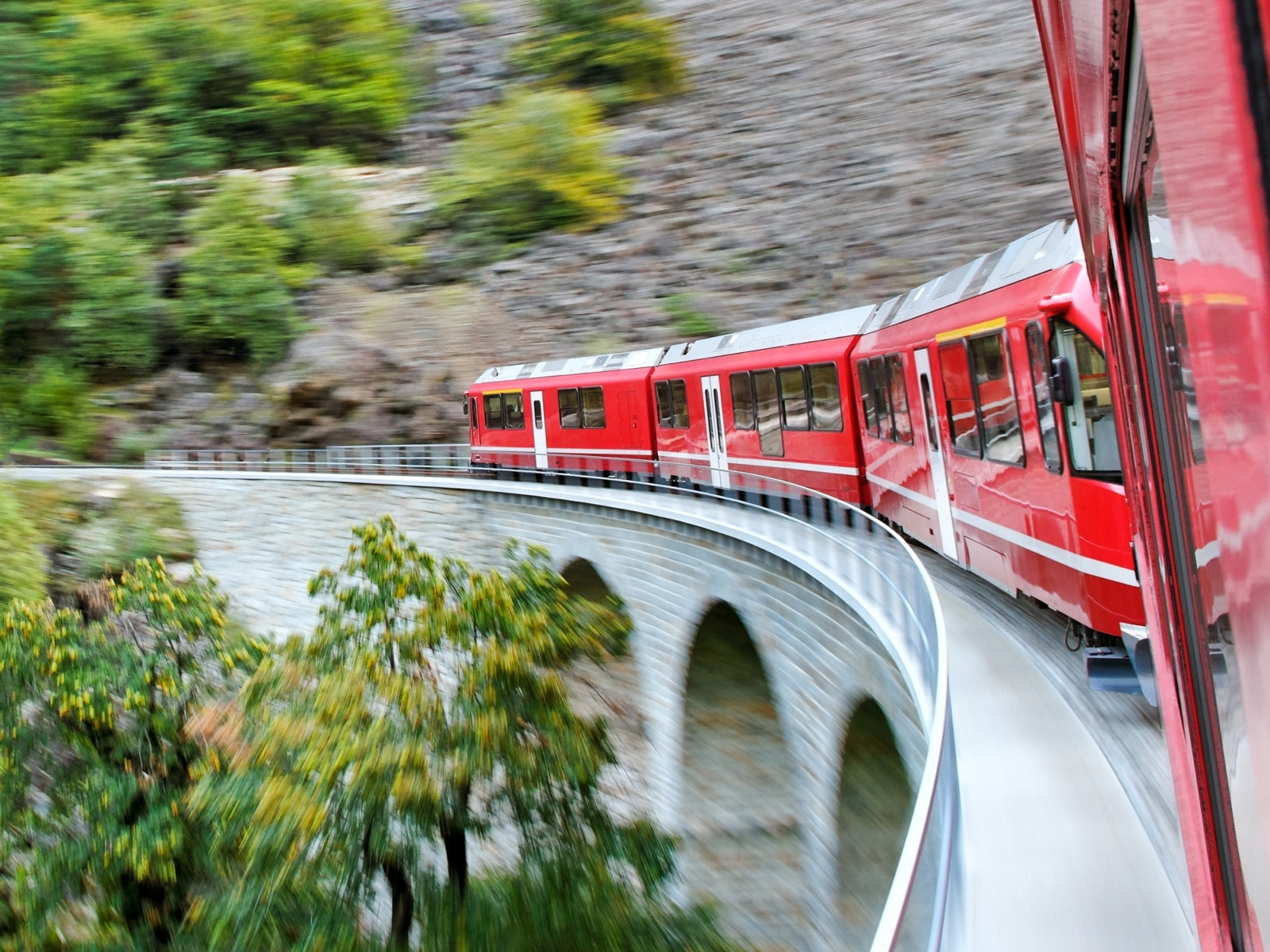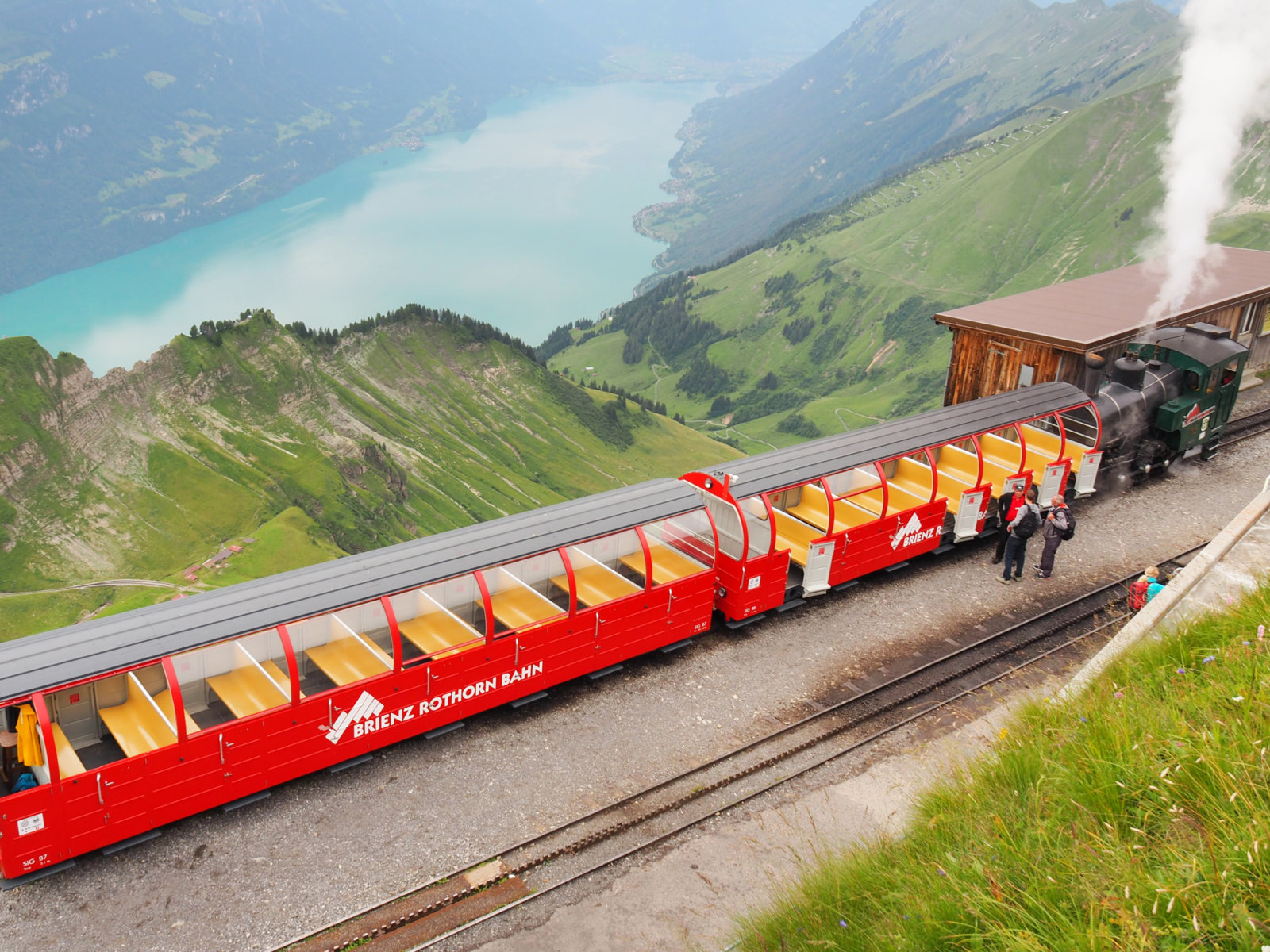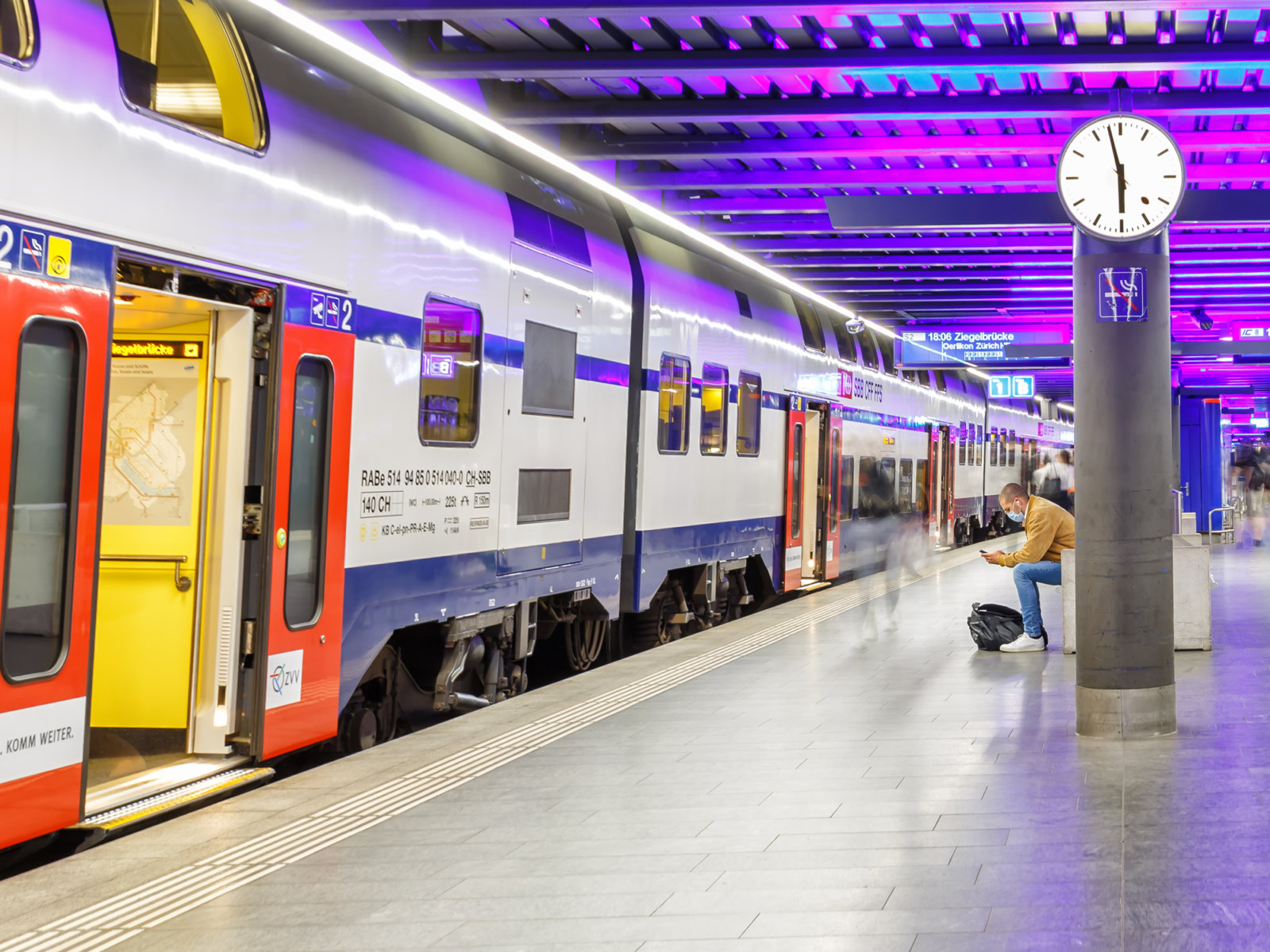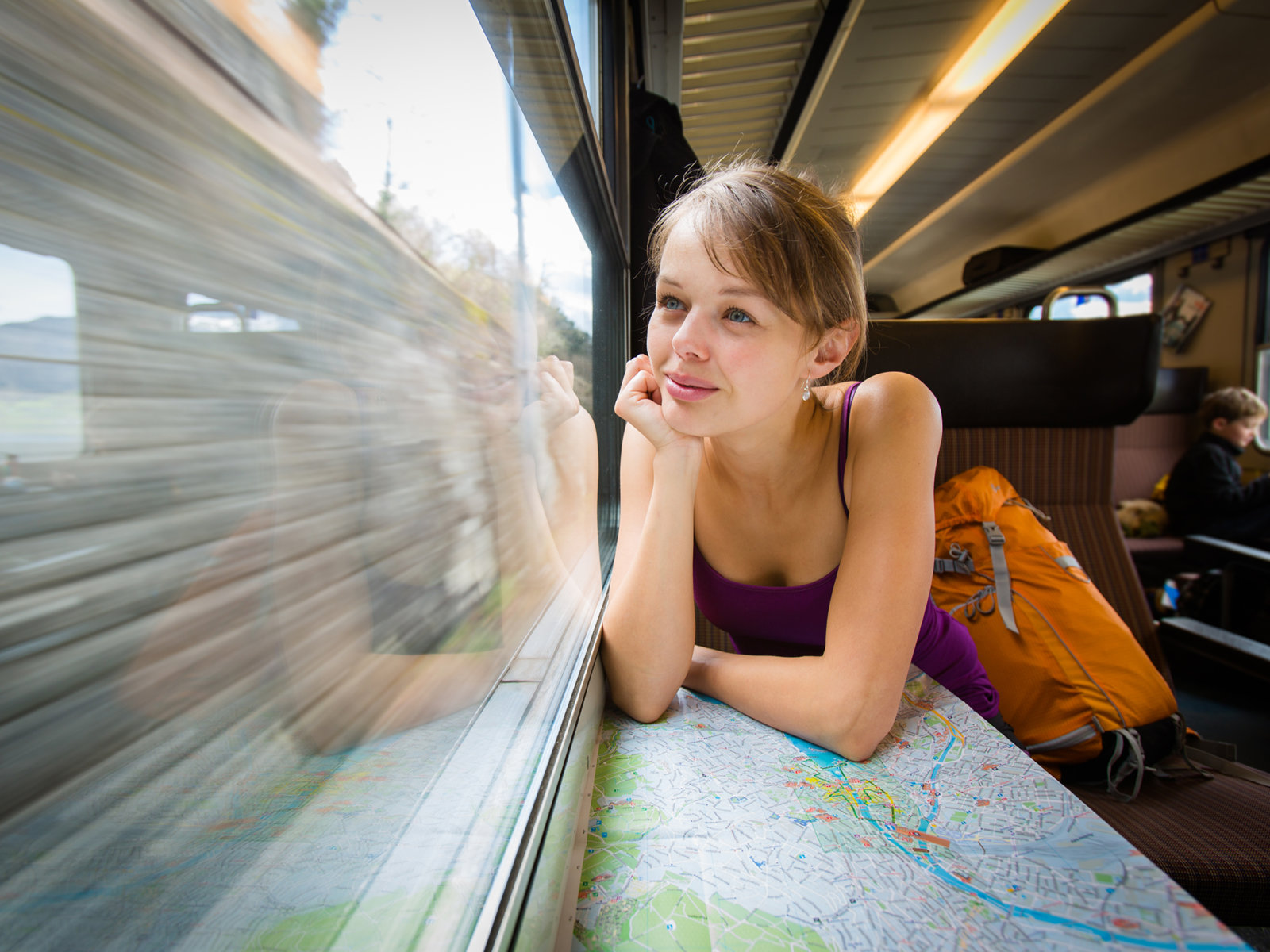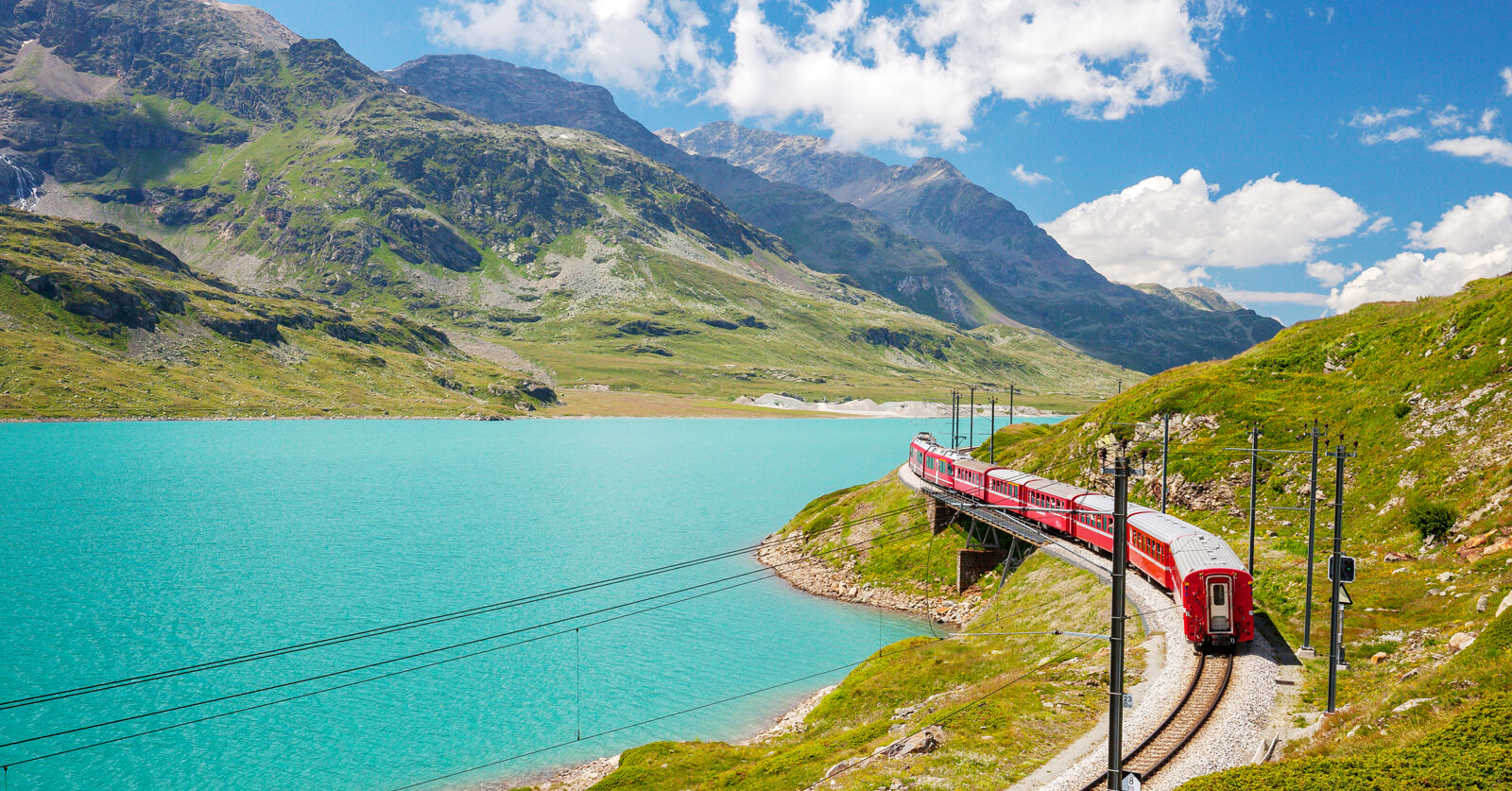
In Switzerland, train travel is more than a simple mode of transportation. Granted, thanks to the world’s most dense public transportation network, the Swiss travel more kilometers by train than any other country.
The Swiss trains, trams, buses, and boats are meticulously scheduled so that transfers are smooth and efficient. Almost all railway lines run at least once an hour, and the busiest routes run every half hour or even every 15 minutes. And for the so-called last mile from the station to the door, a bus, tram, or cable car awaits the arriving passengers.
Regardless of the operating company, all modes of transport are integrated into a single master timetable across the country. It truly is a Swiss travel system.
But in this country boasting nearly 5000 km of railway tracks, train travel is also a major leisure activity. Numerous scenic railway journeys are part of the Grand Train Tour of Switzerland, a network of routes that connect the major sights. It allows tourists to see the best of Switzerland while traveling by train from one destination to another.
This ultimate guide to train travel in Switzerland showcases how the Swiss Travel System works: from types of trains to popular itineraries and ticket options.
All About Train Travel in Switzerland
Train Types in Switzerland
Panoramic Trains
In a country known for its scenic mountains, glaciers, and lakes, it only makes sense to run trains that offer the best views out the window. There are several noteworthy panoramic train lines in Switzerland, each offering oversized window panes to reveal every mountain peak to those seated in their cushy coaches.
Here are the top panoramic trains in Switzerland:
- Bernina Express: This train takes you through the Swiss Alps from Chur to Tirano, Italy. It crosses the Landwasser Viaduct, one of the world's most famous and picturesque railway bridges. And it passes the Bernina Pass, the highest rail crossing in Europe, before presenting views of the Lago Bianco reservoir.
- Glacier Express: This train is considered one of the most scenic train rides in the world. It travels between Zermatt and St. Moritz across southeastern Switzerland, passing 91 tunnels and 291 bridges. Highlights of the route include alpine meadows, typical Swiss villages, the 2033-meter Oberalp Pass, and the Vorderrhein valley. And since it takes about 7.5 hours to complete, it is often touted as the slowest express train in the world. Lunch is served in first class, seat reservations are mandatory, and the trip runs year-round in both directions.
- GoldenPass Express: The latest panoramic train service runs up to four times daily between Interlaken and Montreux. Thanks to unique technology, the GPX can change the gauge of its wheels and the height of its coach bodies, making a transfer in Zweisimmen a thing of the past. The Prestige and first-class seats offer sweeping views of the diverse landscape between Switzerland's German and French-speaking parts.
- Gotthard Panorama Express: This journey starts with a serene steamboat ride across Lake Lucerne to Flüelen. From there, a panoramic train coach with Switzerland’s largest windowpanes picks up the course, then passes cliffs and cascading waterfalls en route to Lugano.
- Luzern–Interlaken Express: This train takes passengers on a journey through the heart of Switzerland. The route connects Lucerne and Interlaken, two popular tourist destinations in less than two hours. From the shores of Lake Lucerne, it passes Lake Lungern, crosses the Brünig Pass, and finally arrives at Lake Brienz in the Bernese Alps.
- Treno Gottardo: This fairly new line runs hourly and connects Basel, Zurich, and Lucerne to Locarno. As the name suggests, the train line runs along the 120-year-old Gotthard route and stops at the historically significant village of Göschenen. After passing through the Leventina valley, it runs along Lake Maggiore before arriving in the southern town of Locarno.
Intercity and Regional Trains
A network of high-speed trains connects Switzerland’s cities. The ICN InterCity train lines run non-stop between major hubs such as Basel, Bern, Geneva, Lausanne, Lucerne, and Zurich.
Meanwhile, the regional lines of the Swiss rail network play a crucial role in connecting the smaller towns and villages. These lines often run through more rural and remote areas, providing access to lesser-known but equally beautiful destinations. Since the locals use these lines to commute, they are an authentic place for tourists to learn about Swiss culture.
Specialty Trains for Foodies
Switzerland has a variety of special train services catering to foodies, such as the Chocolate Train, Cheese Train, and Cookie Train. These trains offer a one-of-a-kind and memorable experience for any food lover.
The Chocolate Train is an absolute must-see for chocolate lovers the world over. The journey aboard the historic Belle-Epoque coaches lasts from Montreux to Montbovon. The chocolate bus connects to the Gruyère region, where you will visit the Maison Cailler chocolate factory in Broc and stroll through the charming Gruyère old town. Admission to the show dairy, as well as coffee and chocolate bread, are included.
The Cheese Train provides a one-of-a-kind experience for cheese lovers. The journey also begins in Montreux and continues to Château-d'Oex, where you can enjoy a delicious cheese fondue. Two museum visits are included: "Espace Ballon," about the history of hot-air ballooning, and the new Swiss Museum of Papercuts.
And finally, the Kambly Cookie Train is a must-try for any sweet tooth. The train line connects Bern and Lucerne through the Emmental valley. The idea is that you can take an entire day to enjoy the scenery along the way. A definitive highlight is a visit to the "Kambly Experience," a cookie bakery in Trubschachen. And there’s an optional boat cruise from Brienz to Interlaken Ost.
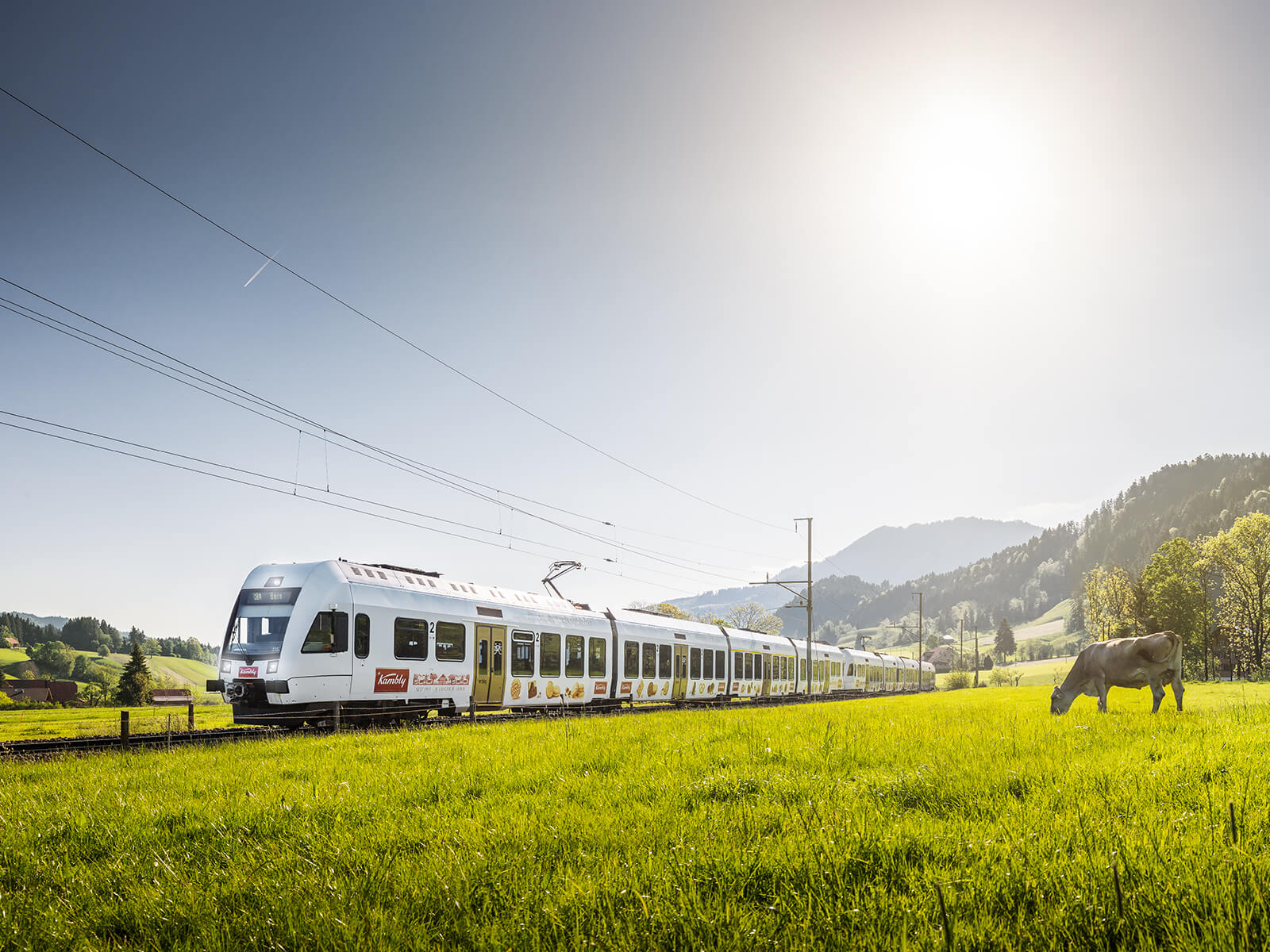
International High-Speed Trains
Thanks to a dense network of international trains, Switzerland is conveniently connected to European destinations. Cutting-edge high-speed trains provide amenities to ensure a comfortable and convenient journey. Business travelers will appreciate the on-board business centers equipped with power outlets and Wi-Fi. Those looking to unwind will appreciate the bistro coaches and restaurant cars - some of which even serve local specialties from the carrier’s country.
International high-speed trains from Switzerland:
- EuroCity: Bologna, Genova, Milan, Venice
- ICE: Berlin, Dortmund, Frankfurt, Hamburg, Hannover, Mannheim, Munich, Stuttgart
- RailJet: Bregenz, Graz, Innsbruck, Salzburg, Vienna
- TGV Lyria: Paris, Marseille
Interactive map of international train connections to Switzerland
Overnight Trains in Switzerland
Thanks to a growing network of overnight trains across Europe, you can see a musical and put on your PJ in Amsterdam, then sip your morning coffee in Zurich.
The increasing demand for climate-friendly travel alternatives has launched a rebirth of overnight train connections. They provide a comfortable way to travel to and from Switzerland - with significantly fewer emissions than airplanes.
Overnight train compositions come in different setups. There are sleeper cars with private compartments featuring beds, sinks, and breakfast service. Sleeper car compartments have space for one to three persons. Deluxe rooms include a shower and toilet.
So-called couchette cars have compartments with four to six bunk beds and shared facilities.
Women-only sections, plus family-friendly and accessible compartments, are available. And finally, overnight trains have regular coaches with seating.
Overnight trains and destinations from Switzerland:
- ÖBB EuroNight: Budapest, Dresden, Leipzig, Ljubljana, Prague, Vienna, Zagreb
- ÖBB Nightjet: Amsterdam, Berlin, Cologne, Hamburg
- From 2024: Barcelona, Rome
Interactive map of overnight trains in Switzerland
Grand Train Tour of Switzerland
The Grand Train Tour of Switzerland is the ultimate train journey through the heart of Switzerland. This round trip offers a complete and comfortable experience, taking visitors to the country's most popular sights and landmarks.
Along a staggering journey of 1280 km, train lovers can check the top experiences of Switzerland off their bucket lists. Consider it “two birds with one stone”: an epic train journey to highlights such as Lucerne, impressive natural spectacles like the Rhine Falls, and majestic peaks like the Matterhorn.
The Grand Train Tour of Switzerland passes no less than 11 lakes and includes five panoramic train lines, making it a unique and unforgettable Swiss train journey. This experience is available year-round, and you can start and finish your journey wherever it is most convenient.
The Grand Train Tour of Switzerland is divided into eight sections:
- Zurich – Lucerne – Interlaken (131 km, 2:45 h)
- Interlaken – Montreux (120 km, 3:15 h)
- Montreux – Visp – Zermatt (148 km, 2:30 h)
- Zermatt – Chur – St. Moritz (291 km, 7:45 h)
- St. Moritz – Tirano – Lugano (183 km, 6:30 h)
- Lugano – Flüelen – Lucerne (182 km, 5:30 h)
- Lucerne – St. Gallen (125 km, 2:15 h)
- St. Gallen – Schaffhausen – Zurich (133 km, 2:30 h)
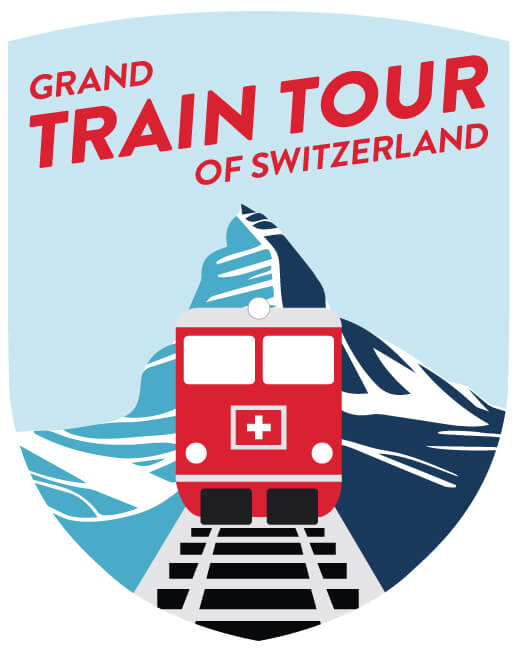
Train Itineraries in Switzerland
Overview
Switzerland's train system is like a journey through a storybook, with popular routes like the Glacier Express as the main chapters. Each route offers a different tale, taking passengers across historic viaducts and past mighty glaciers. Whether you're a railway enthusiast or simply looking for a scenic way to travel, Switzerland's trains provide an immersive soundtrack for your journey.
Most Popular Train Lines in Switzerland
The Glacier Express, often heralded as the world’s slowest express train, wins our nomination for the most popular train line in Switzerland. It is regularly booked down to the last seat, treating the lucky passengers to a visual extravaganza through the large panoramic windows.
Here are other popular train lines in Switzerland that we have covered in detail:
Lesser-Known Train Lines in Switzerland
Switzerland is a dream destination for railway enthusiasts. Apart from the usual suspects, there are numerous lesser-known train lines in Switzerland.
Alpine Cruise: We had the pleasure of experiencing the Alpine Cruise train experience that winds through the canton of Graubünden. The idea is that your luggage is shipped from one hotel to the next - just like on a cruise ship. Meanwhile, you get to travel on the iconic red trains of Rhaetian Railway to places like Bergün, Chur, Davos, or St. Moritz. At the end of each day, simply check into the hotel at the destination.
Centovalli Line: For those looking to explore the Italian-speaking region, the Centovalli Line is a must-do. This route runs between Locarno and Domodossola and offers breathtaking views of the Centovalli region, including the famous Centovalli viaduct.
Chemins de Fer du Jura: This hidden gem of a train line passes through the sparsely populated Jura plateau. Between Glovelier and La-Chaux-de-Fonds, the narrow-gauge train stops in many small towns, each presenting a new chance to enter one of the many hiking trails.
Léman Express: This relatively recent train connects Geneva to the cities of Lausanne, Nyon, and Gland. It’s unique in that the Léman Express passes the vineyards of Lavaux and even crosses the border into France.
How to Travel by Train in Switzerland
Planning a Train Trip in Switzerland
When planning a trip by public transportation, it's important to consider that the Swiss rail network is extensive. Planning the itinerary in advance helps ensure the most effective use of your time (and money.)
Some random hints for planning a train trip:
- The Swiss Travel Pass is synonymous with unlimited travel on the Swiss public transportation network. Activate it and forget about it while you transfer from trains to buses, and from boats to mountain railways.
- Make seat reservations in advance if you plan to travel during peak travel season, generally from April to September.
- Unlike most of the world’s train stations, Switzerland’s train platforms are freely accessible by anyone - even without a valid ticket. There are no turnstiles or ticket gates whatsoever.
- Ticketing on Swiss trains is based on an honor system where it is assumed that each traveler has a valid ticket when boarding a train. During random checks, travelers have to be able to produce a fare card or travel pass, or else they will be fined.
- Conveniently ship your luggage from one hotel to the next. This service is not very expensive and gives you flexibility during the day.
Switzerland Train Map
The official Switzerland train map is updated annually by Swiss Federal Railways. Available in print or digitally, the Switzerland train map is the most comprehensive overview of Switzerland's train network. A single Swiss map contains all train stations, major and minor train lines, mountain railways, and even boat lines.
Train Companies in Switzerland
Their trains and coaches can be recognized by the abbreviation “SBB CFF FFS.” These abbreviations cover three of the four languages of Switzerland, but they all stand for Swiss Federal Railways:
- SBB: Schweizerische Bundesbahnen
- CFF: Chemins de Fer Fédéraux Suisses
- FFS: Ferrovie Federali Svizzere
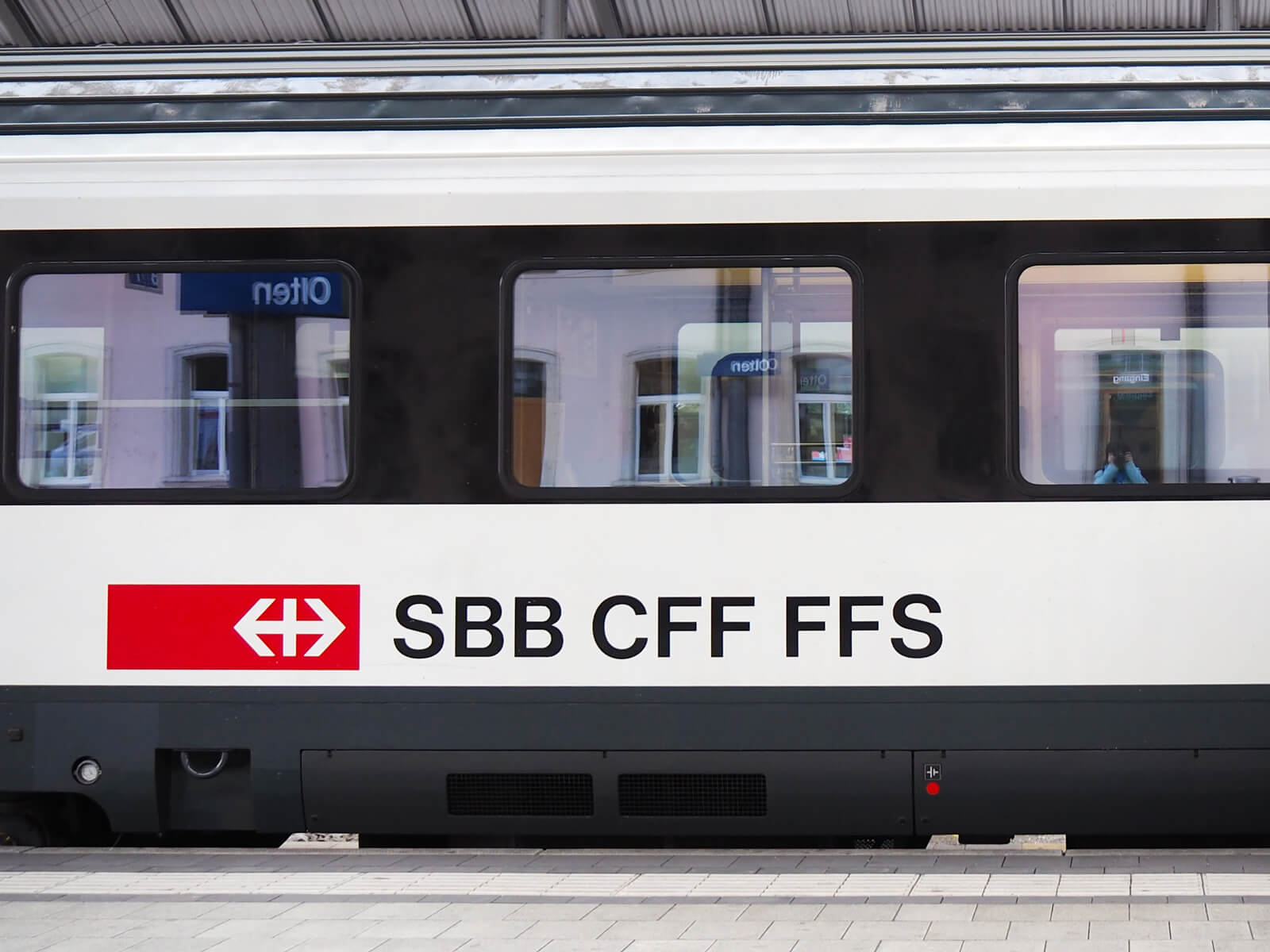
In addition, a few other companies cover large areas of Switzerland, such as BLS and SOB. Finally, several regional lines provide connections from hubs to smaller train stations.
Notable train companies in Switzerland:
- Appenzeller Bahnen
- Berner Oberland-Bahn
- Bern-Lötschberg-Simplon (BLS)
- Chemins de fer du Jura
- Montreux-Oberland-Bernois (MOB)
- Matterhorn Gotthard Bahn (MGB)
- Rhätische Bahn (RhB)
- Schweizerische Südostbahn (SOB)
- THURBO
- Zentralbahn
Travel Classes on Swiss Trains
Swiss trains offer two main travel classes: first class and second class. The primary distinction between the two classes is the level of comfort and available onboard amenities.
Second-class coaches are rather nice, with cushioned seating arranged in sets of four. Most seats do not have dividing armrests, which removes some privacy. Especially during peak travel times, such as during weekday commuting or on Fridays and Sundays, second-class coaches can get quite crowded. As a result, seats are not always available.
First-class coaches on Swiss trains offer more comfort and privacy. For one, they are roomier with fewer seats per carriage, but each seat features more space and ample legroom. Armrests between seats provide more privacy. Other amenities include power outlets for every seat and business sectors for working in a quiet environment.
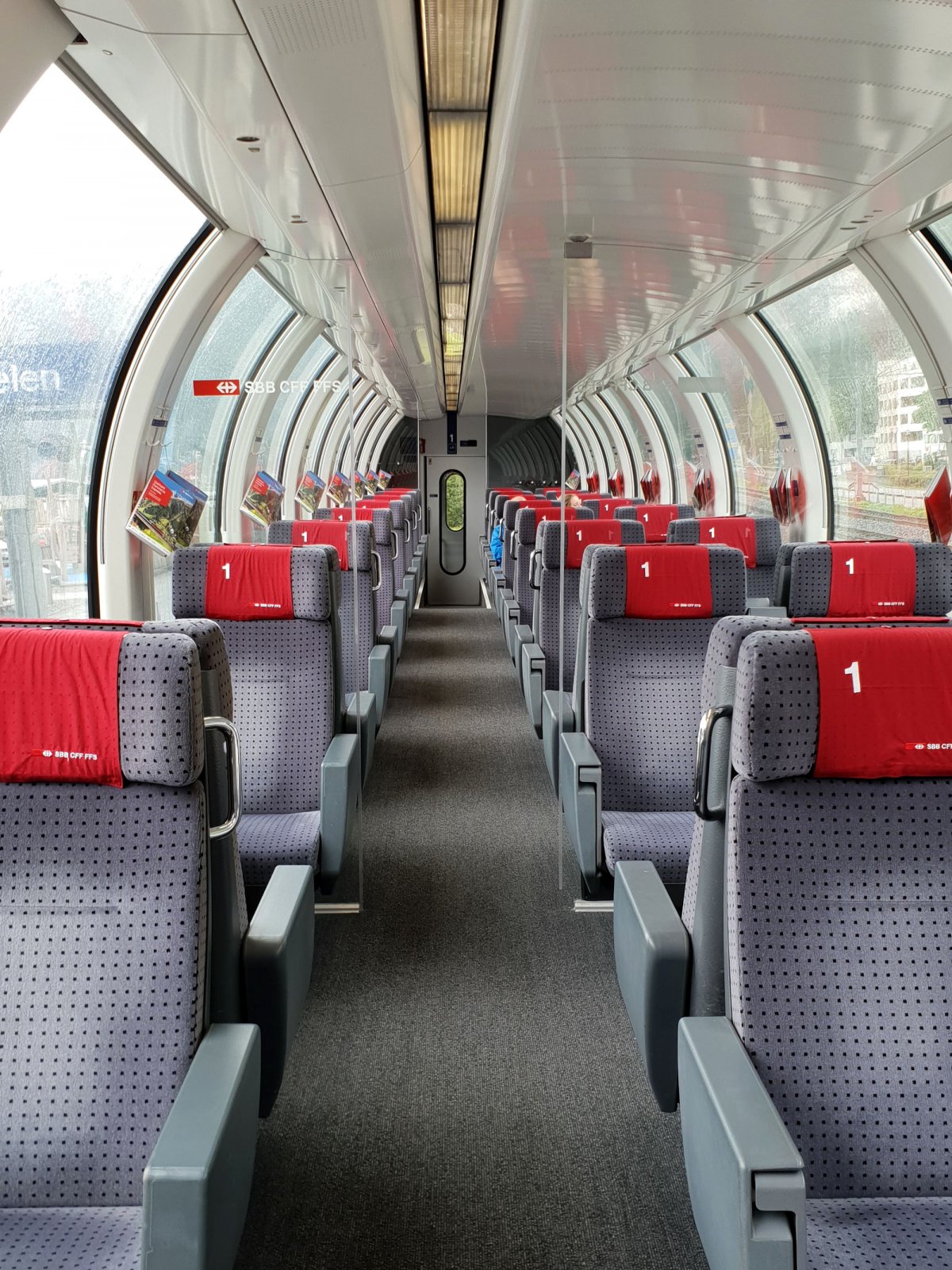
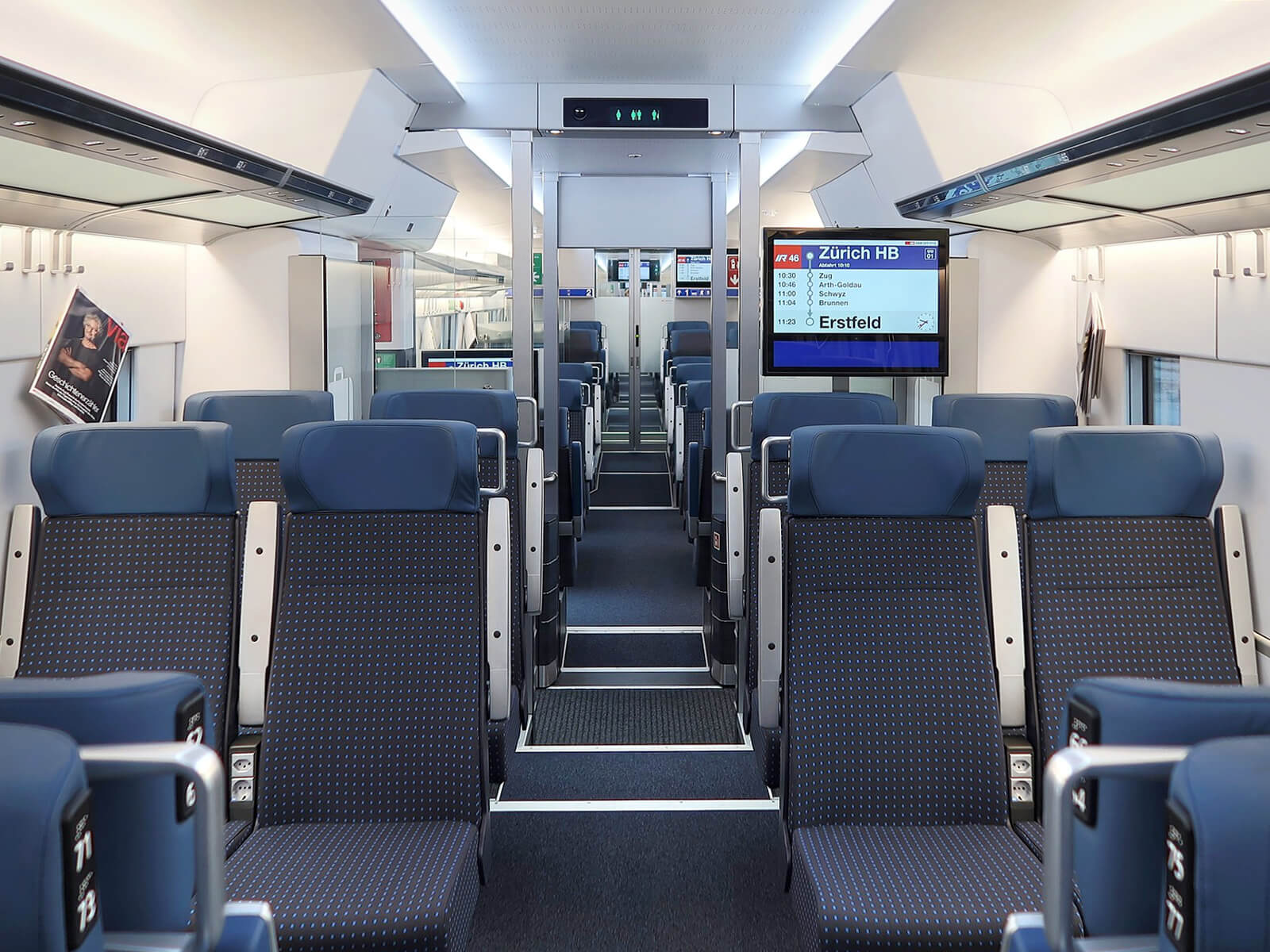
Information about the sectors where first and second-class coaches are located on a given train is shared on overhead boards or over the loudspeaker. First-class coaches might not be available on some private train lines, and amenities vary by type of train.
Tickets and Train Passes
There are a range of options for planning train travel logistics in Switzerland. Some visitors may prefer to look up all the destinations on a map and buy individual point-to-point tickets for each leg. Others prefer the blanket coverage of a travel pass. Here is an overview of Switzerland's various tickets and train passes.
Point-to-Point Tickets
Point-to-point tickets can be purchased at the train station ticket booths and vending machines, on the train company's website, or in the official SBB mobile app.
While this approach may be the ultimate money-saving option in Switzerland, it is unlikely to be the most efficient. It is also not the most flexible way because the regular point-to-point tickets require you to follow a schedule.
Regional Passes
Regional passes are an ideal alternative for those travelers who plan on spending most of their time in a particular region, such as Central Switzerland or the Bernese Alps.
Some regional passes offer free transportation coverage for the entire pass duration, while others restrict free travel days but offer discounts on the remaining days. They are available to both residents of Switzerland and visiting tourists.
Swiss Travel Pass
The Swiss Travel Pass presents the ultimate option. Unlike single tickets or regional passes, it provides unlimited blanket coverage for most Swiss public transportation for a pre-determined number of travel days. The “hop on/hop off” nature of the pass is perfect for those who want to stay flexible.
The Swiss Travel Pass includes most trains, buses, and boats in Switzerland. Five top-tier panoramic train lines and any trains operated by Switzerland’s major carriers are covered entirely.
Buy a Swiss Travel Pass at GetYourGuide
Get our Ultimate Free Guide!
Swiss Travel Pass: How to make it work in 2025
The free guide includes a round-trip itinerary starting in Zurich for budget travelers. It “hacks” a three-day Swiss Travel Pass to make it last for a five-day stay…
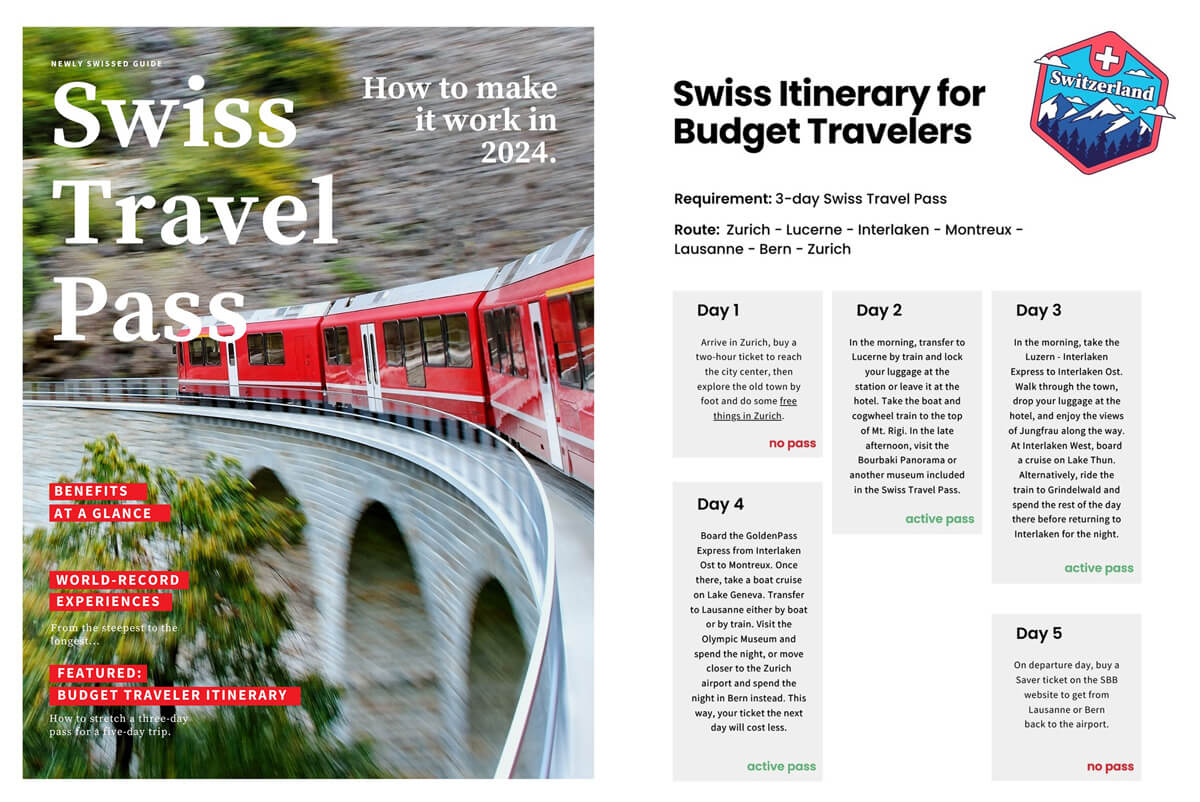
FAQs About Train Travel in Switzerland
PLEASE Pin OUR EXPERT GUIDE!
